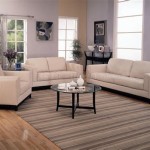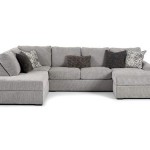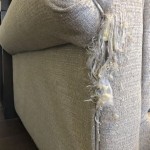Wooden Sofa Designs Without Cushions
Wooden sofas without cushions offer a unique aesthetic, blending rustic charm with modern minimalism. They present a distinct style choice for those seeking furniture that prioritizes clean lines, natural materials, and a firm seating experience. This article explores the various design options available for cushionless wooden sofas, examining materials, styles, and considerations for incorporating them into different living spaces.
The primary material for these sofas is, of course, wood. Different wood types offer varying levels of durability, aesthetics, and price points. Hardwoods like teak, mahogany, and oak are popular choices due to their strength and resistance to wear. These woods offer rich grains and colors, adding a touch of elegance to any space. For a more budget-friendly option, softer woods like pine or cedar can be considered, though they may require more care and maintenance.
Beyond the type of wood, the finish plays a crucial role in the overall look and longevity of the sofa. Natural finishes, such as oil or wax, enhance the wood's inherent beauty and provide a protective layer against moisture and scratches. Stained finishes offer a wider range of color options, allowing for greater customization and coordination with existing decor. Painted finishes, though less common for this style of sofa, can create a bold statement piece, particularly in contemporary settings.
The design of a cushionless wooden sofa can vary significantly, catering to different tastes and needs. The classic bench-style sofa provides a simple, versatile seating option. These sofas often feature straight lines and a minimalist profile, making them suitable for various interior styles. For added comfort, some bench-style sofas incorporate a slightly curved or angled seat.
More elaborate designs may include armrests, backrests, or even intricately carved details. Armrests can be simple extensions of the frame or feature more complex designs, such as curved supports or integrated storage compartments. Backrests can range from low, slatted designs to higher, more supportive structures. Carved details, often seen in traditional or rustic styles, add an element of artistry and craftsmanship to the piece.
Slatted designs are particularly popular for cushionless wooden sofas. The spaces between the slats provide ventilation, promoting airflow and preventing the buildup of moisture. This can be especially beneficial in humid climates. The slatted design also contributes to the overall lightweight appearance of the sofa, making it feel less bulky in a room.
When incorporating a cushionless wooden sofa into a living space, several factors should be considered. The size and scale of the sofa should be proportionate to the room. A large, heavy wooden sofa can overwhelm a small space, while a small bench may appear lost in a larger room. Careful consideration of the room’s dimensions and existing furniture is essential for creating a balanced and harmonious environment.
The style of the sofa should complement the overall aesthetic of the room. A sleek, minimalist wooden sofa fits seamlessly into modern or contemporary interiors. A more rustic or traditional design, perhaps with carved details or a distressed finish, complements farmhouse or bohemian styles. The wood’s color and finish should also harmonize with the surrounding decor, whether it's the flooring, walls, or other furniture pieces.
While cushionless wooden sofas offer a distinct aesthetic, they are not always the most comfortable option for extended periods of sitting. The firmness of the wood can become tiring, particularly for those accustomed to plush, cushioned seating. Adding throws, blankets, or even strategically placed pillows can enhance comfort and provide a softer surface to lean against.
The placement of the sofa within the room also influences its functionality and impact. Positioning the sofa against a wall maximizes floor space and creates a focal point. Placing it in the center of the room can divide the space and create distinct zones, particularly in open-plan layouts. Consider the room’s traffic flow and the desired seating arrangement when determining the optimal placement for the sofa.
Maintenance is another key aspect to consider. Regular dusting and occasional polishing will help preserve the wood’s finish and prevent scratches. Avoid placing the sofa in direct sunlight or near heat sources, as this can cause the wood to dry out and crack. Depending on the type of wood and finish, periodic reapplication of oil or wax may be necessary to maintain the sofa’s protective layer.
Wooden sofas without cushions offer a unique and stylish alternative to traditional upholstered seating. By carefully considering the materials, design, and placement, one can successfully integrate these pieces into a variety of living spaces, creating an environment that is both visually appealing and functional.

5 Seater Modular Wooden Sofa Set Without Cushion

Canapé Moderne En Forme De L Bois Teck Massif Sans France Wooden Sofa Designs Diy Patio Furniture Set

Handmade Wooden Sofa Design L Shaped Set Casa Furnishing

R T S Furniture Brown Solid Wooden 3 Seater Sofa Without Cushion

Modern L Shaped Sofa Made Of Solid Teak Wood Without Cushion Wooden Designs Living Room Design Set

3 Seater Sofa Set Without Pillow Cream Cushions Teak Finish Upto 60 Off At Best In Apkainterior

Buy Single Seater Sofa Without Cushion Teaklab

R T S Furniture Brown Heavy Solid Wooden Sofa Set Without Cushion For Home

Clyde Solidwood Two Seater Sofa Without Cushion In Dark Cappuccino Colour By Hometown Set Wooden

Saamenia Furnitures Solid Sheesham Wood Two Seater Sofa Without Cushion For Living Room Hotel Fabric 2 In Buy








